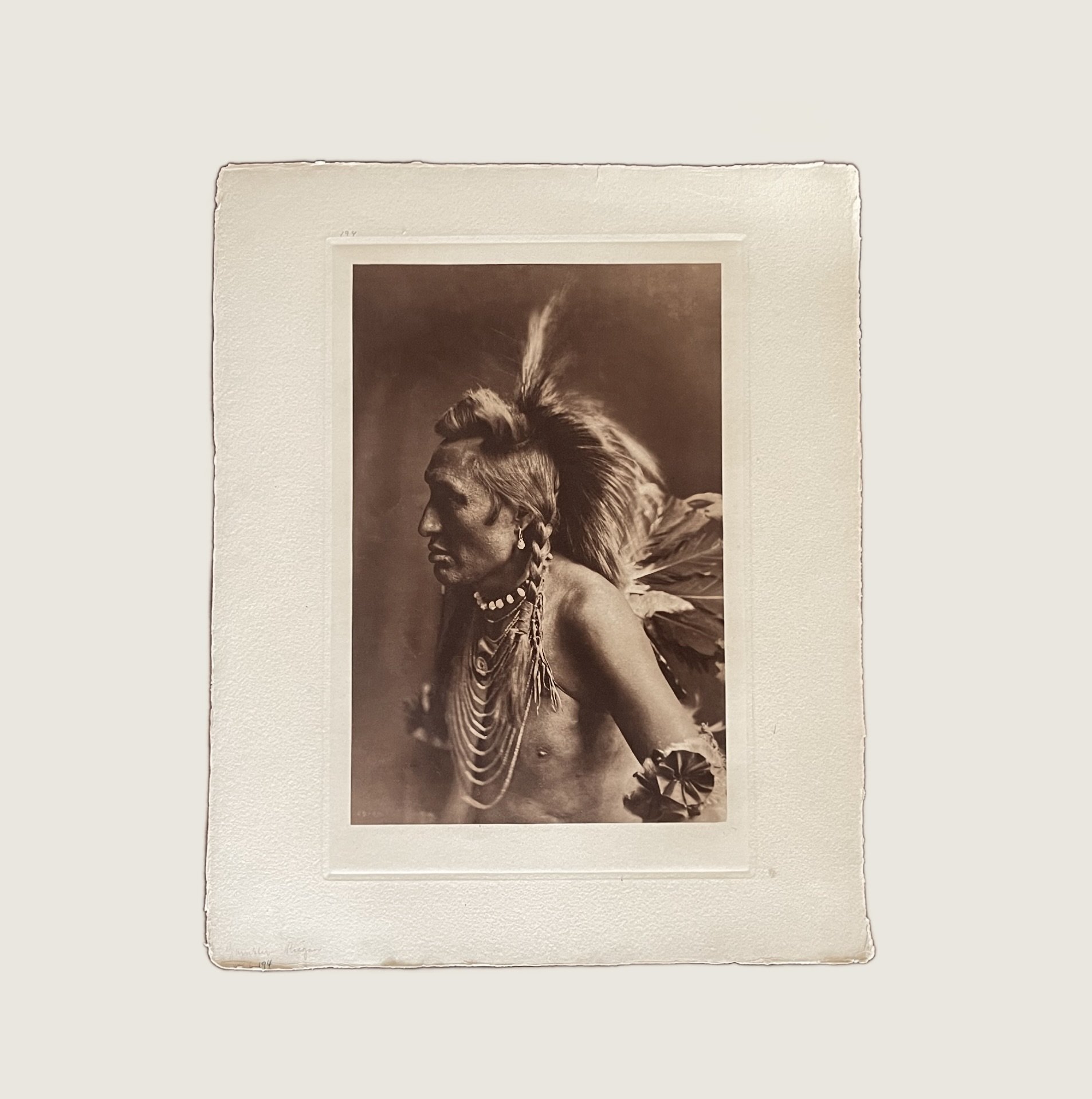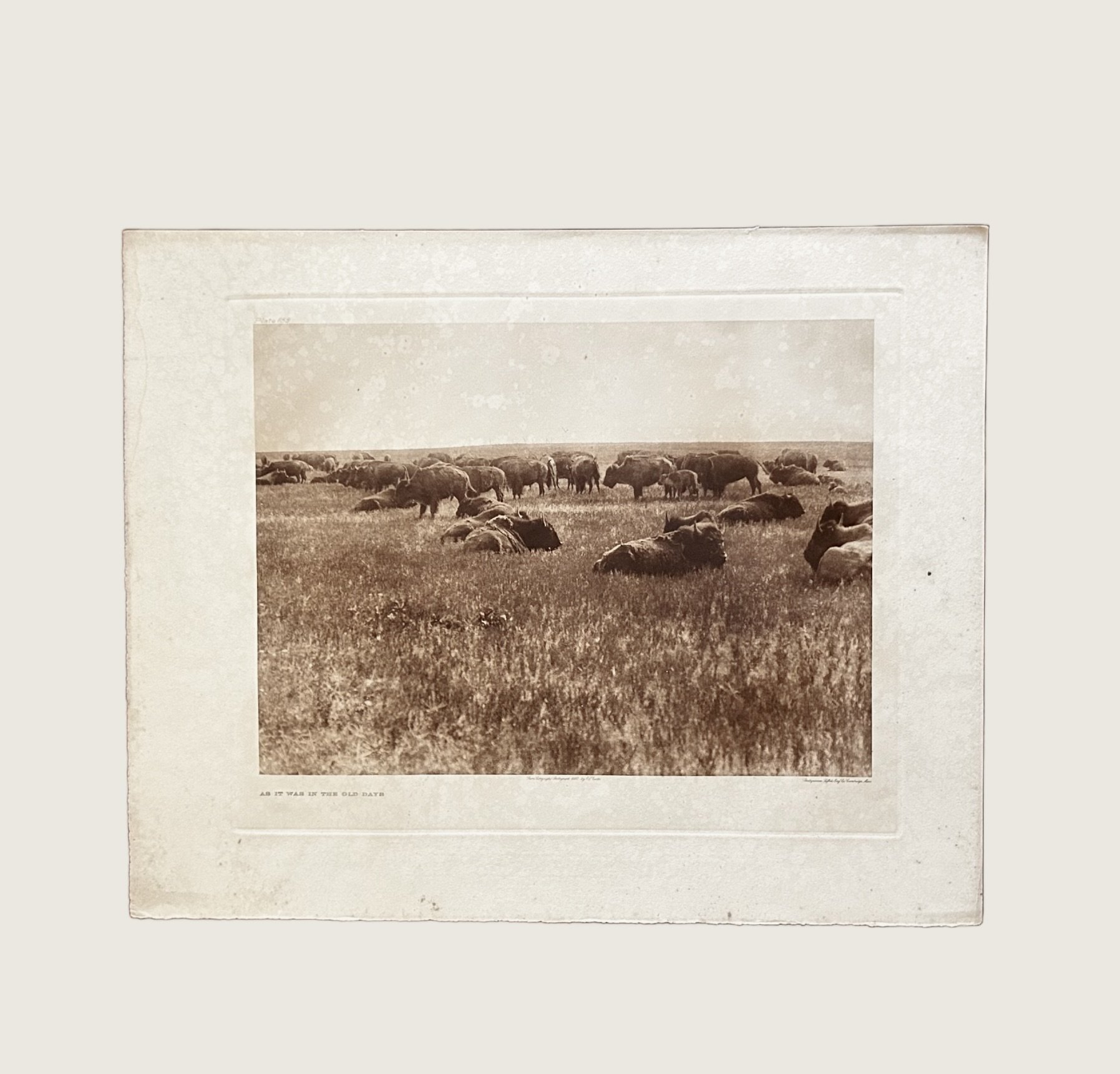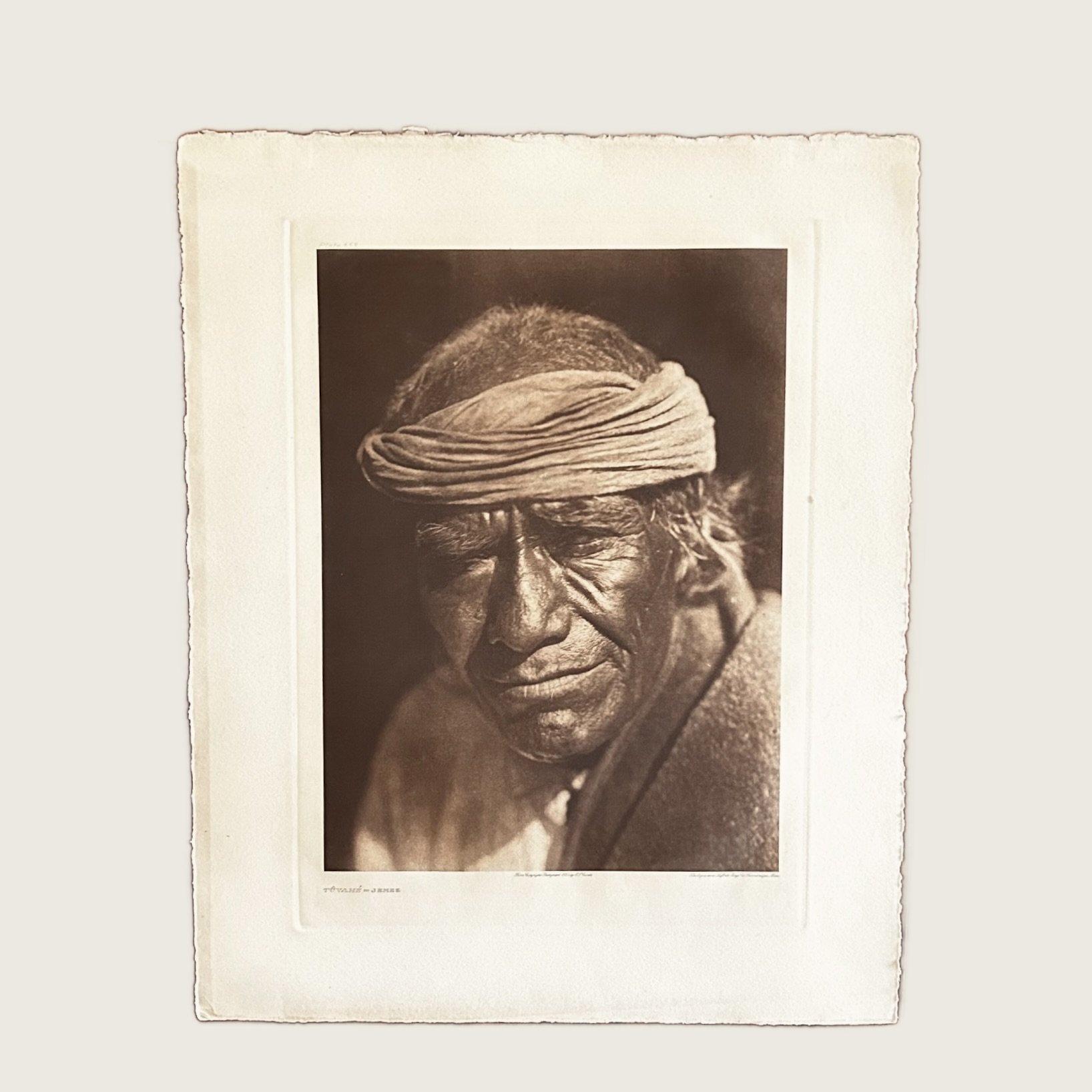Edward S Curtis (1868-1952) An Isleta Man, 1925
Edward S Curtis (1868-1952)
Title: An Isleta Man
Plate: 549
Portfolio: Volume 16
Printer: Suffolk Eng. Co. Cambridge Mass
Medium: Photogravure
Date: 1925
Expounding upon the Pictorialist style, this portrait blurs the lines between male and female representation in this image, revealing the complexity of gender expression within Indigenous cultures and the aesthetic choices of Curtis' photographic style. The delicate features and soft, introspective gaze of the man depicted creates an ambiguity that challenges rigid Western notions of masculinity and femininity.
Emerging in the 1880s, Pictorialism aimed to establish photography as an art form, not just a tool for documentation. Its approach placed an emphasis on the beauty of the subject matter, and used techniques like soft focus and blurring, in order to steer us away from a rigid record of reality.
Dimensions:
Sheet: W 17 ¾ L 21 ¾
Image: W 11 ½ L 15 ½
Location: Rancho Santa Fe, California
Edward S Curtis (1868-1952)
Title: An Isleta Man
Plate: 549
Portfolio: Volume 16
Printer: Suffolk Eng. Co. Cambridge Mass
Medium: Photogravure
Date: 1925
Expounding upon the Pictorialist style, this portrait blurs the lines between male and female representation in this image, revealing the complexity of gender expression within Indigenous cultures and the aesthetic choices of Curtis' photographic style. The delicate features and soft, introspective gaze of the man depicted creates an ambiguity that challenges rigid Western notions of masculinity and femininity.
Emerging in the 1880s, Pictorialism aimed to establish photography as an art form, not just a tool for documentation. Its approach placed an emphasis on the beauty of the subject matter, and used techniques like soft focus and blurring, in order to steer us away from a rigid record of reality.
Dimensions:
Sheet: W 17 ¾ L 21 ¾
Image: W 11 ½ L 15 ½
Location: Rancho Santa Fe, California
Edward S Curtis (1868-1952)
Title: An Isleta Man
Plate: 549
Portfolio: Volume 16
Printer: Suffolk Eng. Co. Cambridge Mass
Medium: Photogravure
Date: 1925
Expounding upon the Pictorialist style, this portrait blurs the lines between male and female representation in this image, revealing the complexity of gender expression within Indigenous cultures and the aesthetic choices of Curtis' photographic style. The delicate features and soft, introspective gaze of the man depicted creates an ambiguity that challenges rigid Western notions of masculinity and femininity.
Emerging in the 1880s, Pictorialism aimed to establish photography as an art form, not just a tool for documentation. Its approach placed an emphasis on the beauty of the subject matter, and used techniques like soft focus and blurring, in order to steer us away from a rigid record of reality.
Dimensions:
Sheet: W 17 ¾ L 21 ¾
Image: W 11 ½ L 15 ½
Location: Rancho Santa Fe, California












